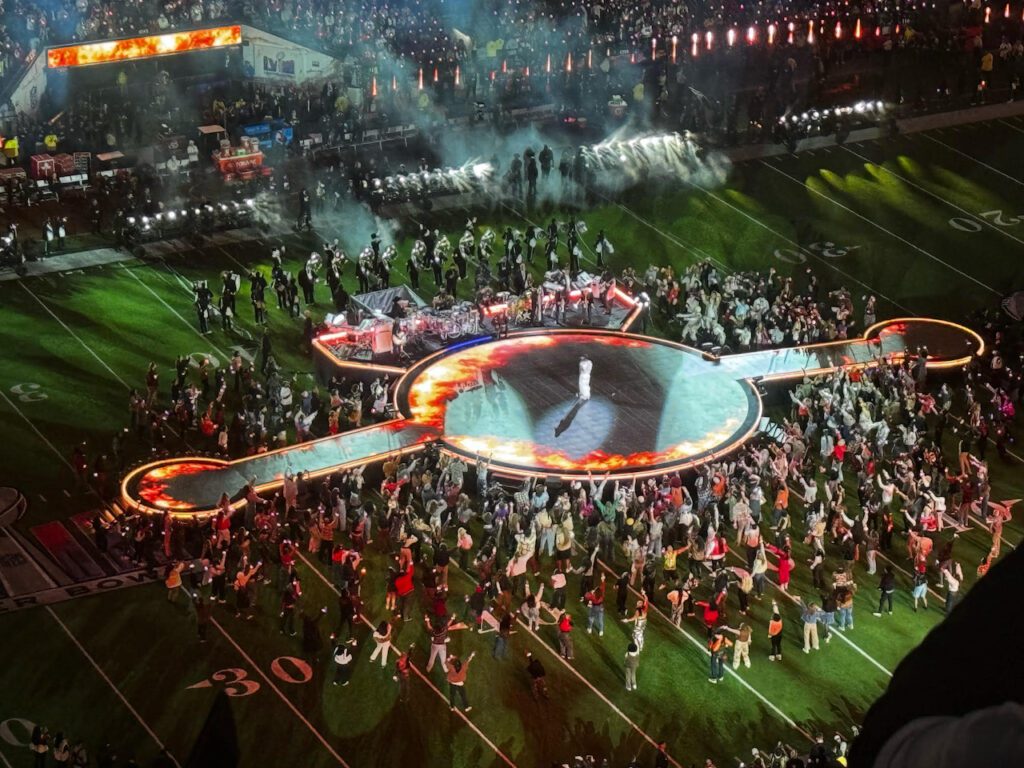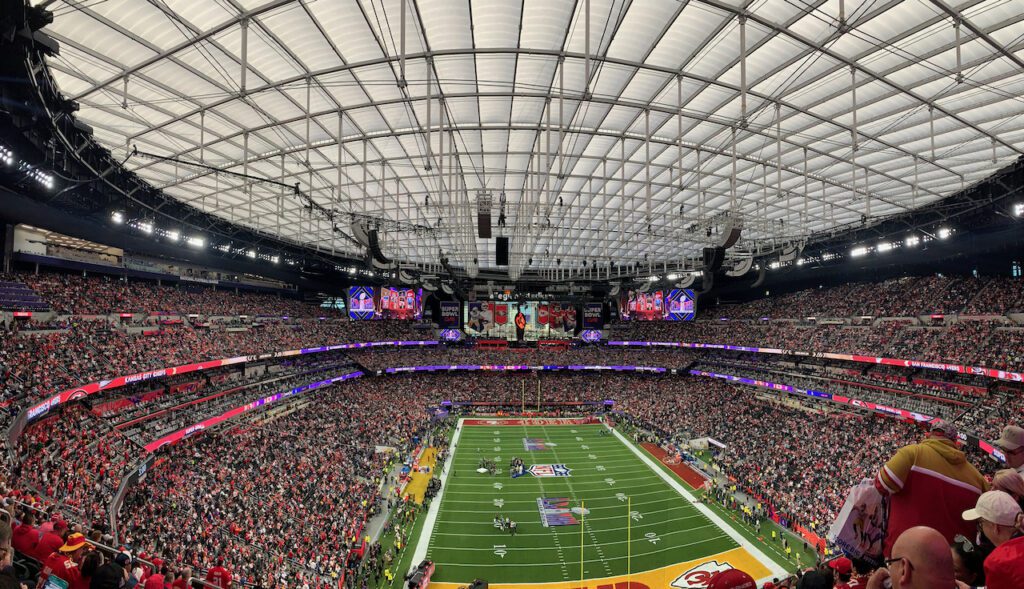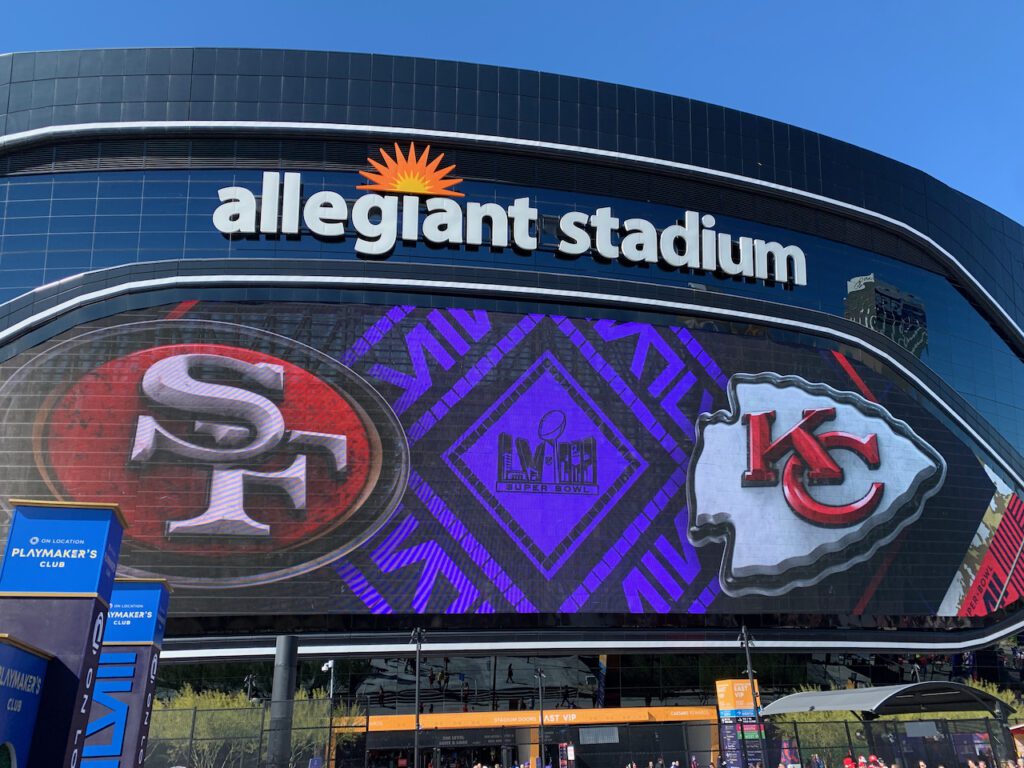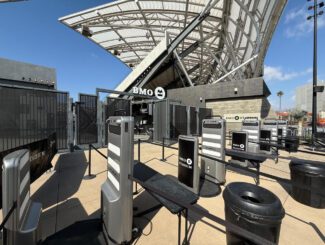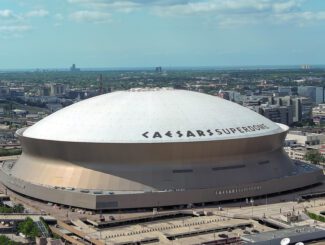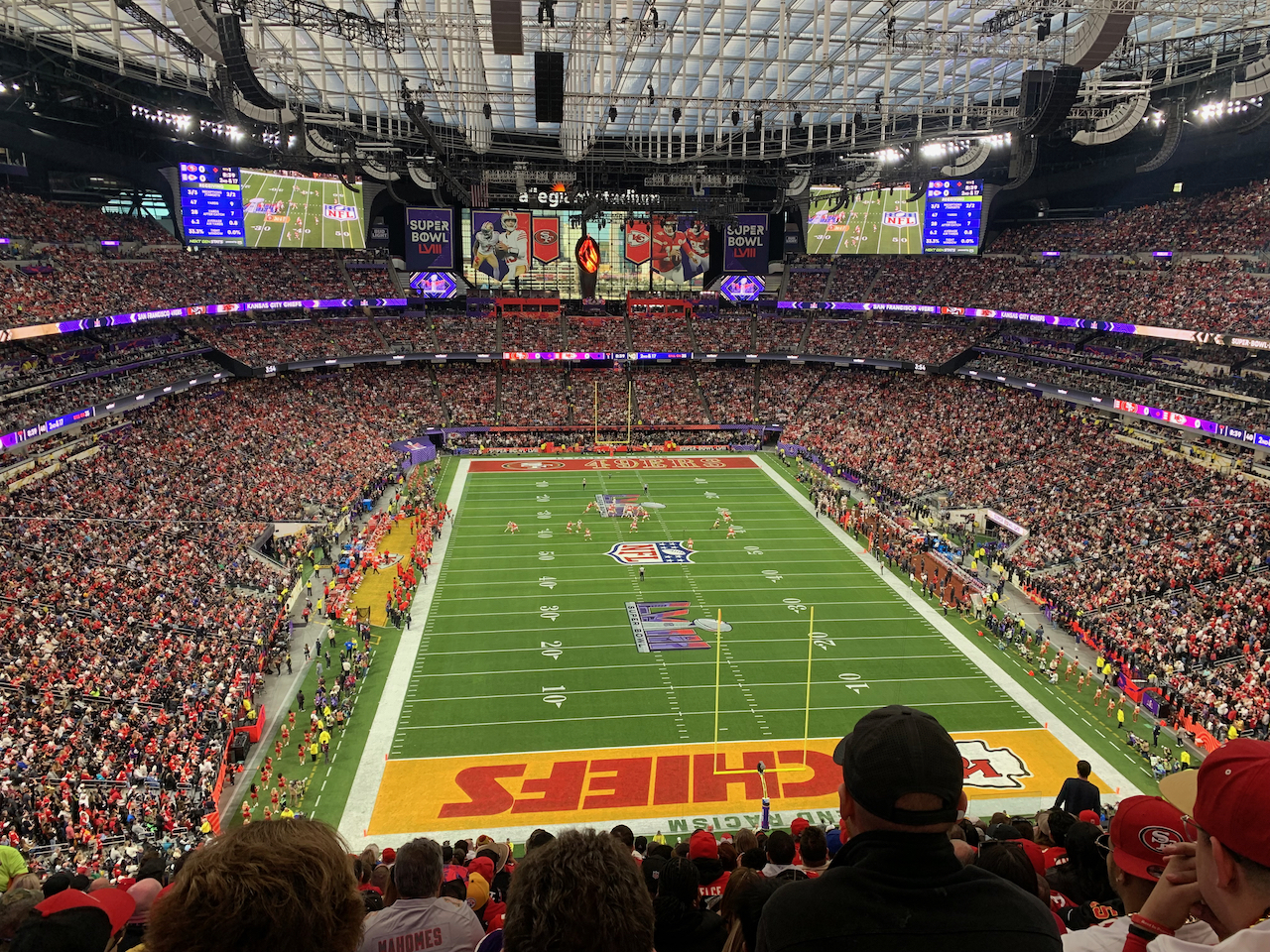
The Wi-Fi network data usage at Super Bowl LVIII recorded a big jump in per-device data used en route to a new Super Bowl record for total data used of 34.8 TB, an increase from last year’s Wi-Fi total of 31.5 TB, according to statistics released by Extreme Networks.
While the overall total data usage mark from the Feb. 11 game at Allegiant Stadium in Las Vegas only tied the largest single-day Wi-Fi stadium usage number we have on record — 34.8 TB used at Ohio Stadium in 2022 — the per-device number shot up to 788 megabytes, a jump from the previous record of 643 MB per device set last year at State Farm Stadium in Glendale, Ariz.
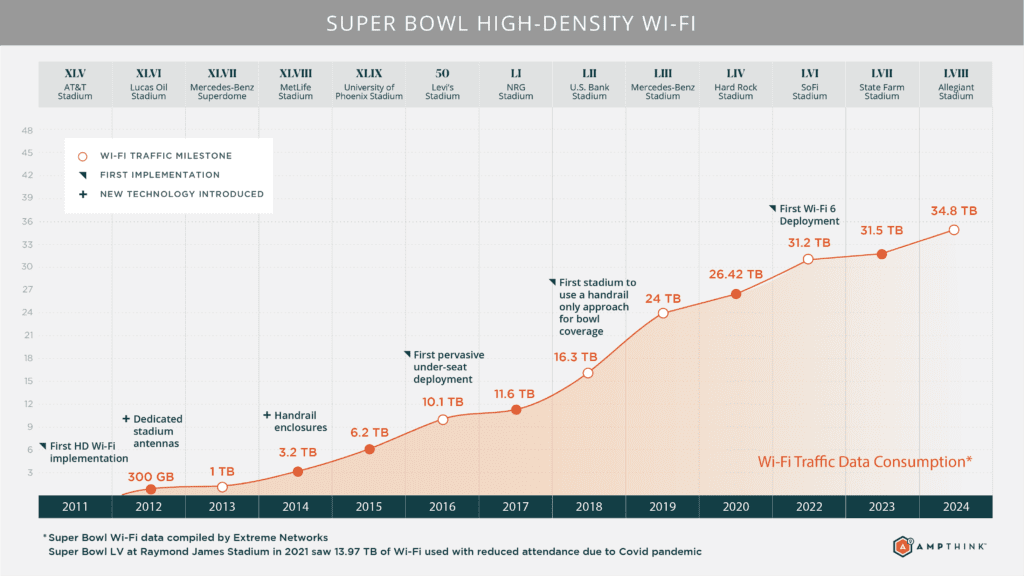
That higher per-device usage allowed the 61,629 in attendance at Super Bowl LVIII — the smallest Super Bowl crowd ever other than the reduced-attendance Super Bowl LV held during the Covid pandemic — to match the Wi-Fi total from the game at Ohio State, which had 106,787 fans in attendance. The totals might also have been helped by the fact that the game went into overtime before the Kansas City Chiefs pulled out a 25-22 victory over the San Francisco 49ers.
The Wi-Fi 6 network at Allegiant Stadium, home of the Las Vegas Raiders, uses gear from Cisco, including the new Cisco 9104 antennas which provide farther-reach coverage that allows for placements on structures farther away from the fans. So why do we quote Extreme Networks for statistics? That’s because official Super Bowl Wi-Fi usage numbers are supplied by Extreme under Extreme’s deal with the NFL as its Official Wi-Fi and Wi-Fi analytics provider.
According to figures provided by Extreme, approximately 44,157 attendees connected to the Wi-Fi network during Super Bowl LVIII, a “take rate” of 72 percent. That number is exactly the same as the 72 percent take rate at last year’s Super Bowl, but still well below the 82 percent at Super Bowl LVI at SoFi Stadium when 57,628 devices connected to the network out of 70,048 total attendance.
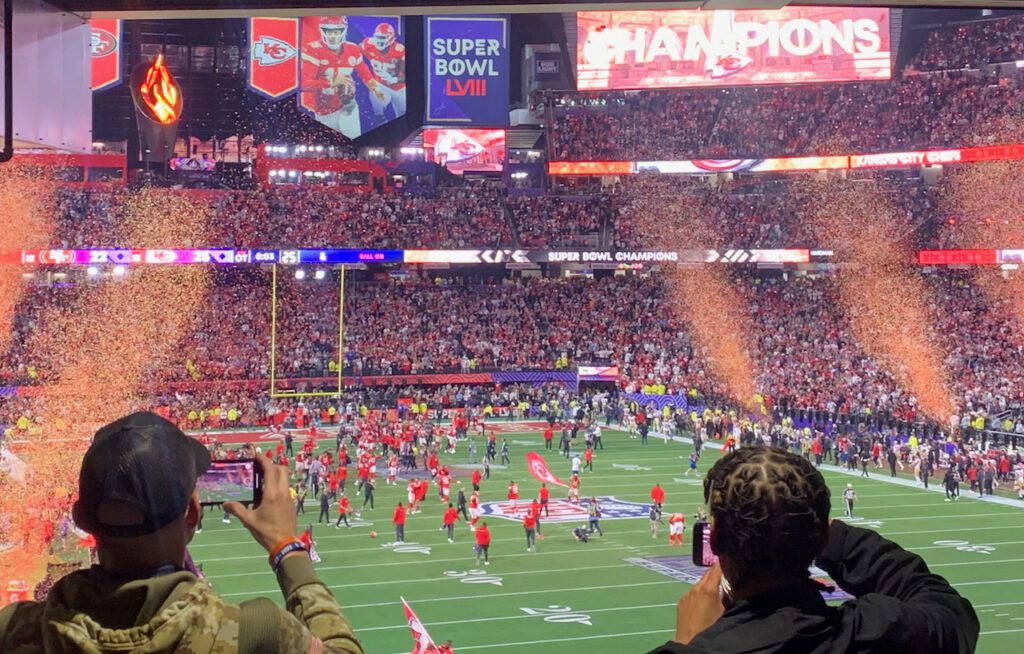
One possible reason for a non-record take rate may have been Verizon’s apparent effort to push its customers to use 5G cellular services instead of Wi-Fi. We have not yet been able to confirm from Verizon or other sources if this actually was the case, so stay tuned for more info on that front.
Other stats provided by Extreme include the peak concurrent device connection of 31,206 and peak throughput mark of 17.6 Gbps. Approximately 14 TB of data was used before the game started, according to Extreme.
As longtime Stadium Tech Report readers know, the NFL’s yearly “big game” has traditionally set and reset the bar for single-day Wi-Fi usage, with almost every game since Super Bowl XLIX in 2015 setting a new record. However, non-official reports from venues around the country suggest that some of the stops of Taylor Swift’s Eras Tour may have had higher single-day Wi-Fi usage at some venues in 2023. (If anyone with official numbers would like to contact us, we’re all ears!)
Intros, halftime and Taylor Swift data usage spikes
One of the more interesting breakdowns Extreme usually supplies are the spikes of data usage during the game (see chart). While it’s come to be expected that moments like pre-game introductions and halftime produce some of the highest spikes in data usage (most likely since there isn’t any game action taking place), one interesting metric we were looking for was whether or not Taylor Swift’s attendance at the game (watching boyfriend Travis Kelce of the champion Chiefs) would cause a big Wi-Fi moment. According to Extreme, the one time Taylor Swift was on the stadium video boards during the second quarter her appearance caused a bandwidth spike of 10.1 Gbps, most likely as fans tried to take a picture.
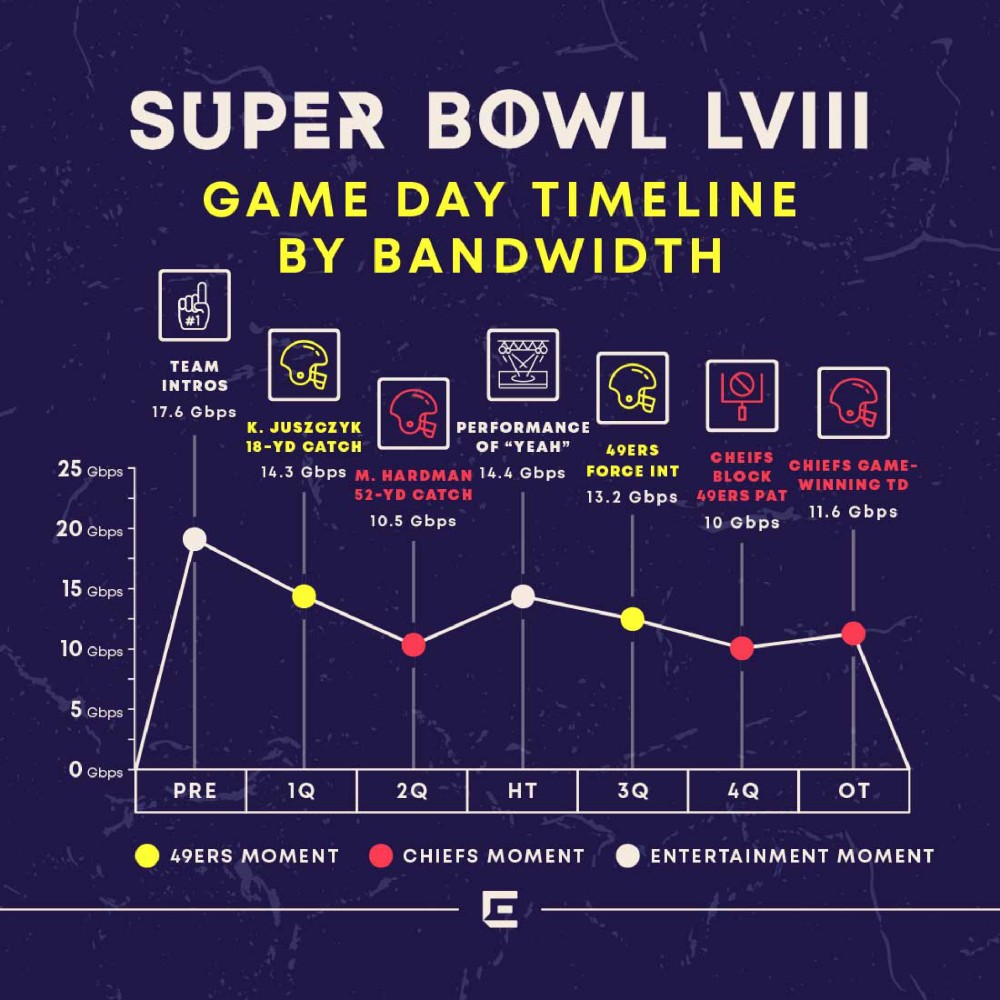
According to Extreme, Facebook remained the top social media application used at the game, followed by X/Twitter, TikTok, Snapchat and Instagram in order of usage. For sports apps used, ESPN was No. 1, followed by the NFL and then apps from broadcasters Fox and CBS.
Verizon’s report of 52.24 TB of data used by its customers on networks in and around the stadium is the only data we have received so far from the major cellular carriers. All the carriers were able to take advantage of improvements made to the stadium’s cellular infrastructure ahead of the Super Bowl.
